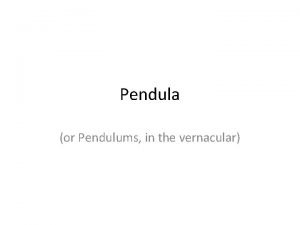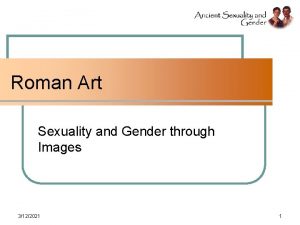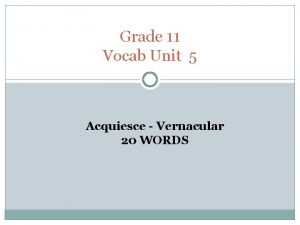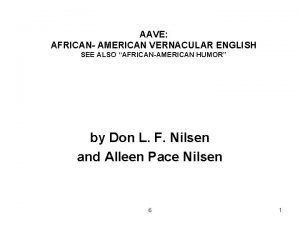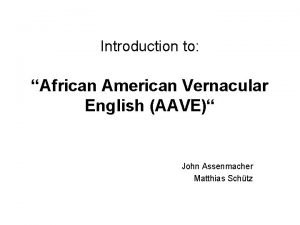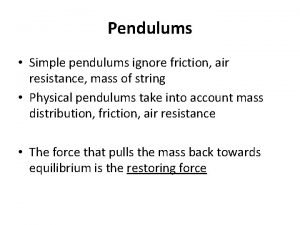Pendula or Pendulums in the vernacular What is








- Slides: 8

Pendula (or Pendulums, in the vernacular)

What is a pendulum? Pendulum: Consists of a massive object called a bob suspended by a string. What is it good for? • Keeping time • Galileo (what other options did he have? ) • Clocks • Calculating acceleration due to gravity • Other, less obvious things • Verifying the rotation of the earth • Understanding Energy: Potential and Kinetic • Study of simple harmonic motion

Conservation of Energy & The Pendulum Definitions • – – – Potential energy describes the possibility of converting stored energy into motion Kinetic energy describes the energy of motion Since (mass)energy can be neither created nor destroyed, potential and kinetic energy can be exchanged interchangeable This height indicates the distance the pendulum bob “falls” under the influence of gravity. It and gravity determine how much potential there is for motion We are back at the same height! And at ½ of a cycle. Kinetic energy is a measure of how fast the bob is moving.

With pendula, we are usually interested in the period What things might affect the period? - mass - angle - length - gravity - wind resistance What do you think the form of the equation might be?

Pendulum: Consists of a massive object called a bob suspended by a string Pendula go through periodic motion as follows: Where: T = period, or the time to go through one cycle l = length of pendulum string g = acceleration of gravity Note: 1. This formula is true for only small angles of θ. 2. What would you expect to find in this equation and is not there?

The motion of a pendulum is independent of the mass • • As long as the mass is big enough so that air resistance can be ignored As long as the mass of the string holding the pendulum is very small compared to the mass of the bob Where: T = period l = length of pendulum string g = acceleration of gravity

As we increase l, what happens? As we increase g, what happens?

As we increase the angle, what happens? As we increase the mass, what happens?
